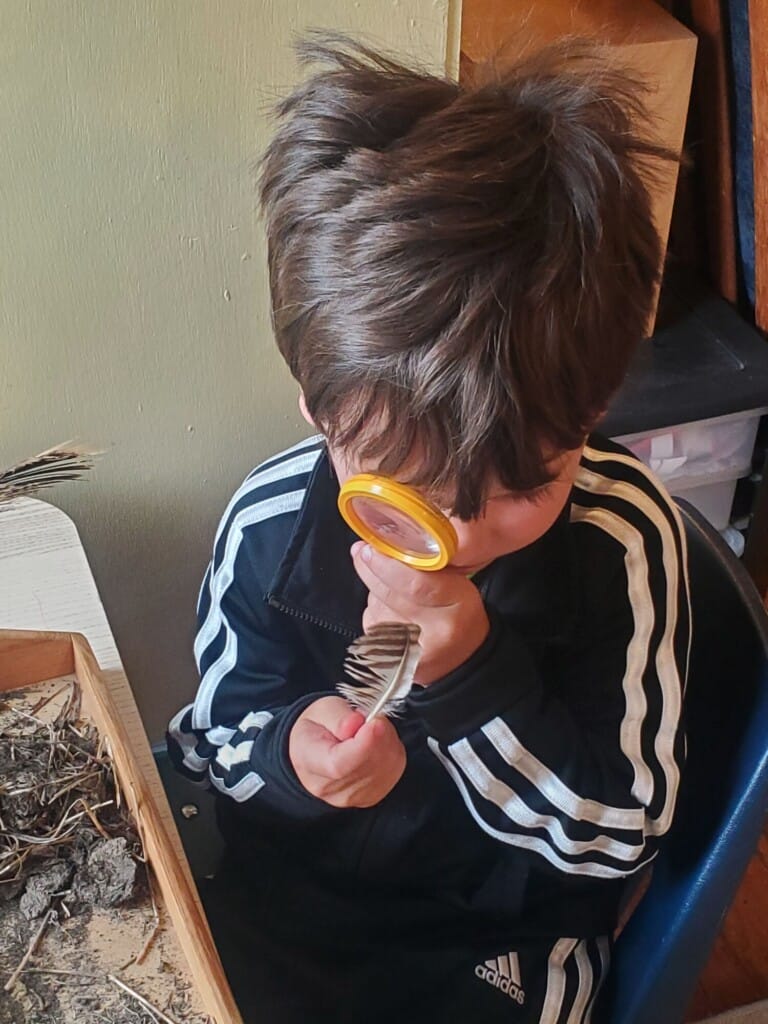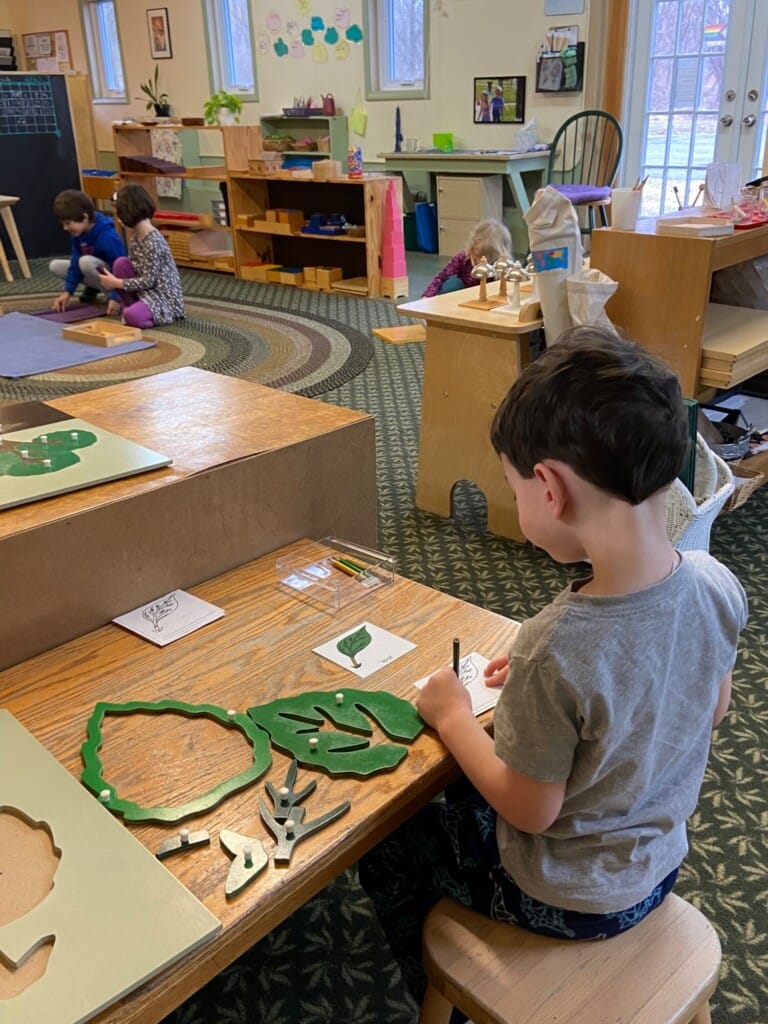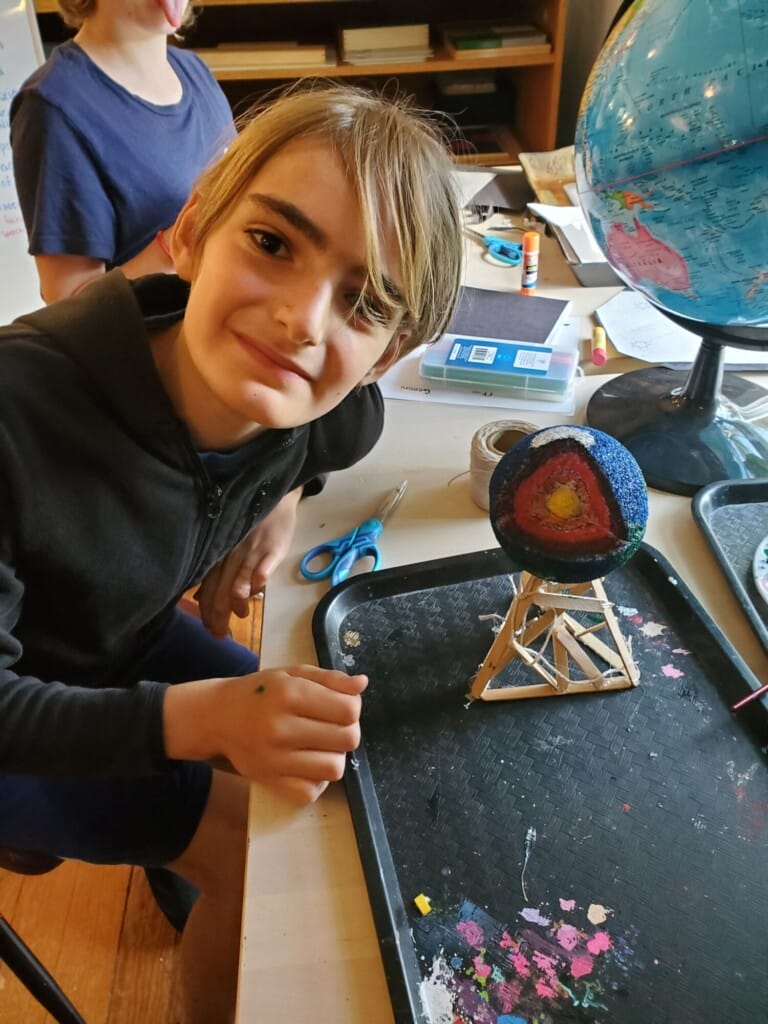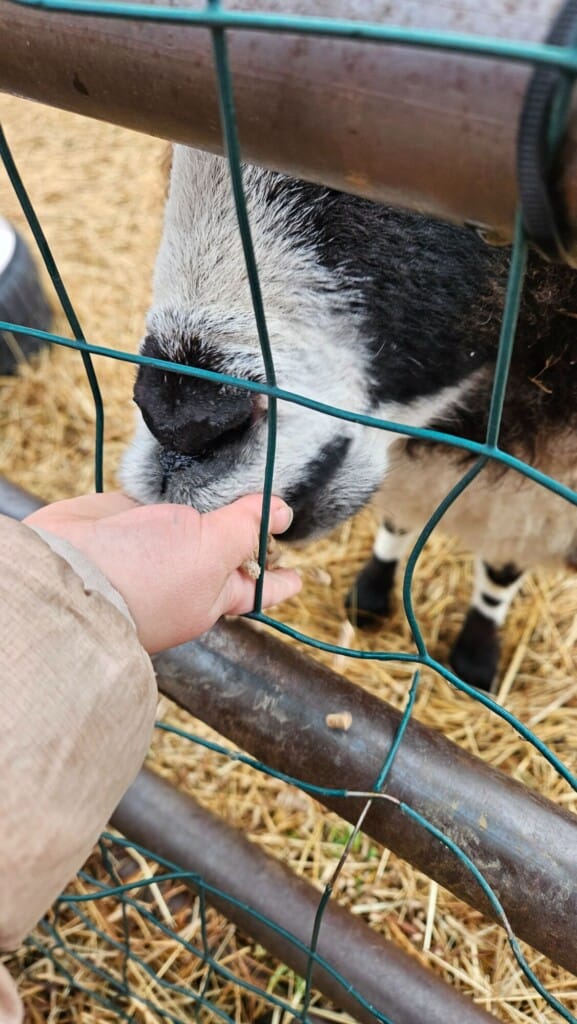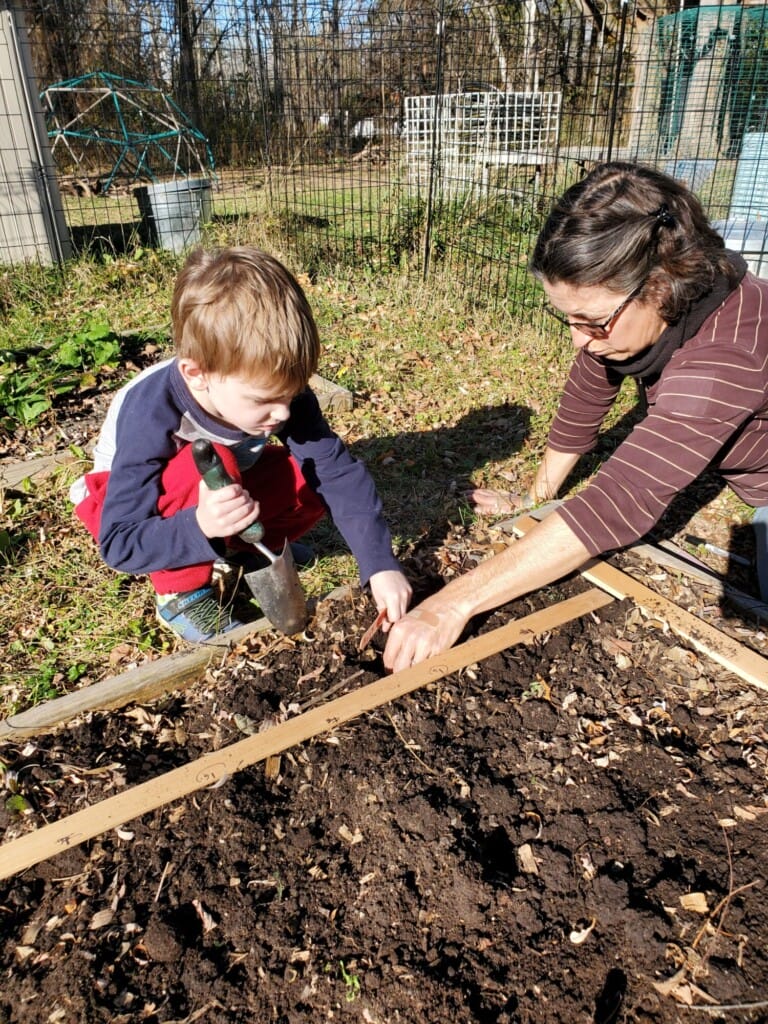Toddler and Primary level sensorial exploration and experimentation are key tools as children learn about the natural world. For example, sand and water tables allow for open-ended work while other activities isolate individual concepts such as sink and float, magnetism, botany, etc. Care for plants and animals overlap with practical life activities and teach science as well as responsibility.
At the Primary level basic skills of science, such as measuring, comparing, classifying, and keen observing, are carefully prepared and practiced. This work is accompanied by extensive classified nomenclature. For example, Primary age children learn the scientific nomenclature of the parts of a flower, such as the calyx and corolla. Classification systems such as living/non-living, and vertebrate/invertebrate are also taught. Children study the basic characteristics and nomenclature of plants and animals. They learn to name common domestic and wild plants and animals, and they work with materials to learn fundamental classifications such as mammals, birds, reptiles, amphibians, and fish. Children are also introduced to some basic concepts of physical science, such as floating/sinking, magnetic/non-magnetic. Non-fiction books related to science are read aloud to the children, and they have classroom responsibilities for the care of indoor plants, as well as feeding the birds outside. The children also plant, tend to, and harvest their own classroom gardens.

